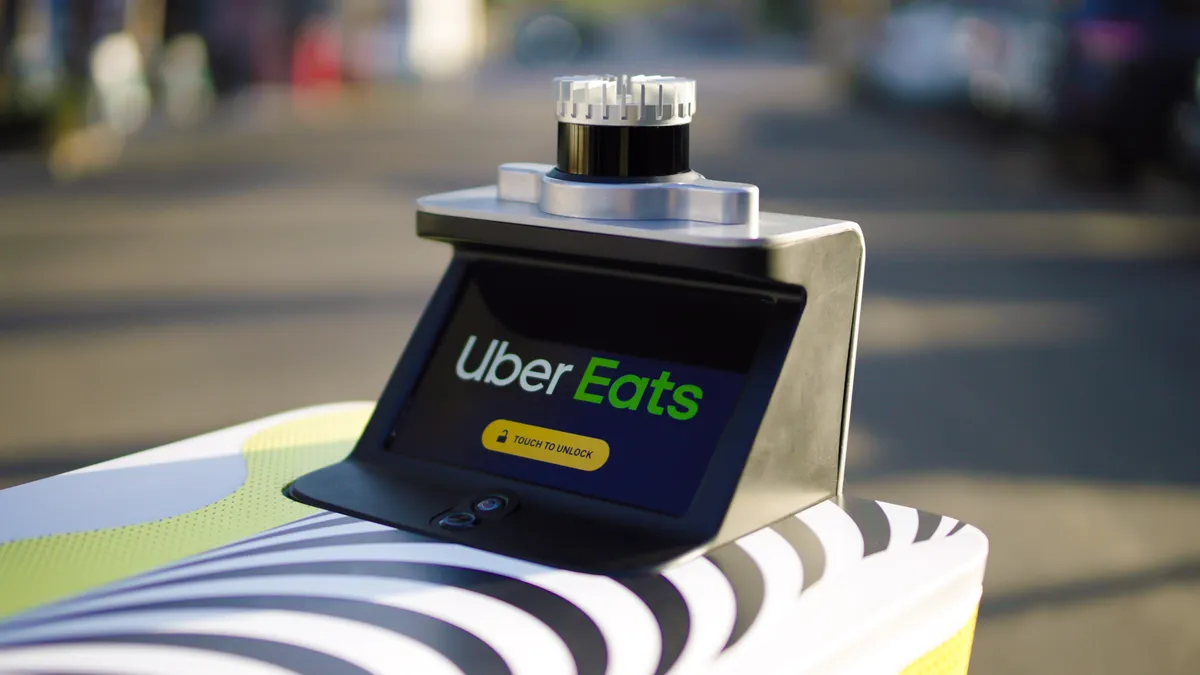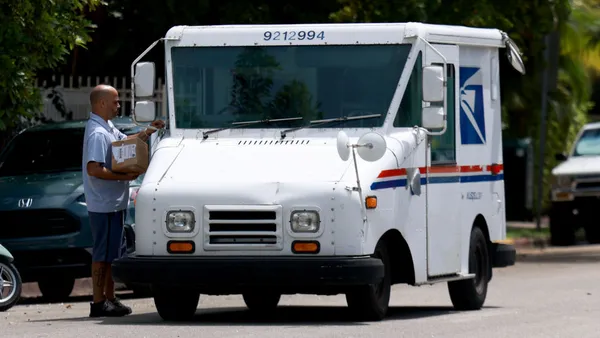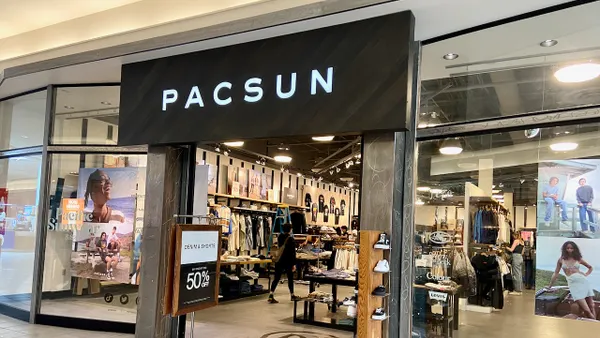Dive Brief:
- Serve Robotics announced an agreement with Uber on Tuesday to deploy up to 2,000 AI-powered sidewalk delivery robots in new U.S. markets on Uber Eats.
- Serve already provides deliveries for Uber Eats in Los Angeles. The company has a fleet of 100 robots in the city, and it expects to operate more of them on Uber Eats as its coverage and delivery volume expand, Serve co-founder and CEO Ali Kashani said in an email.
- Serve has a short list of cities it's considering an expansion into, including Vancouver, Canada; San José, California; and Dallas, Texas. Kashani said Serve is "working with our partners like Uber as well as local municipalities to map out the expansion roadmap."
Dive Insight:
The expansion of Uber and Serve's partnership is a big step towards mass commercialization of autonomous delivery via robots, according to Kashani. Scale will be critical to the long-term success of companies in the space, helping them boost their volumes while tapping into efficiencies.
Delivery bot executives say funding has been harder to come by than in years past, which has complicated expansion efforts. Serve's partnership with Uber, an investor in the company, has been key in growing its delivery activity despite this challenging environment.
The partnership with Uber runs through the beginning of 2026 under its current terms, but Serve expects it to be extended as the expiration nears, Kashani said.
Serve has completed tens of thousands of contactless deliveries in San Francisco and Los Angeles with its self-driving robots, according to Tuesday's announcement. Deliveries in Los Angeles have seen growth since Serve launched there last year with Uber Eats, and more than 200 restaurants there are now participating.
Serve's partnerships extend beyond Uber. The company has also worked with 7-Eleven for testing in West Hollywood, California, and Pizza Hut Canada for a pilot program in Vancouver.
While Serve has a strong customer pipeline, it has sometimes run into the issue of not having the bandwidth to work with a new company, Kashani told Supply Chain Dive in a March interview. What Serve prioritizes in these decisions is customer fit.
"Are they at the right stage? Do they have the right components? Are they in the right areas for us?" Kashani said. "Basically, what's the lowest lift for us to keep building on what we have?"















